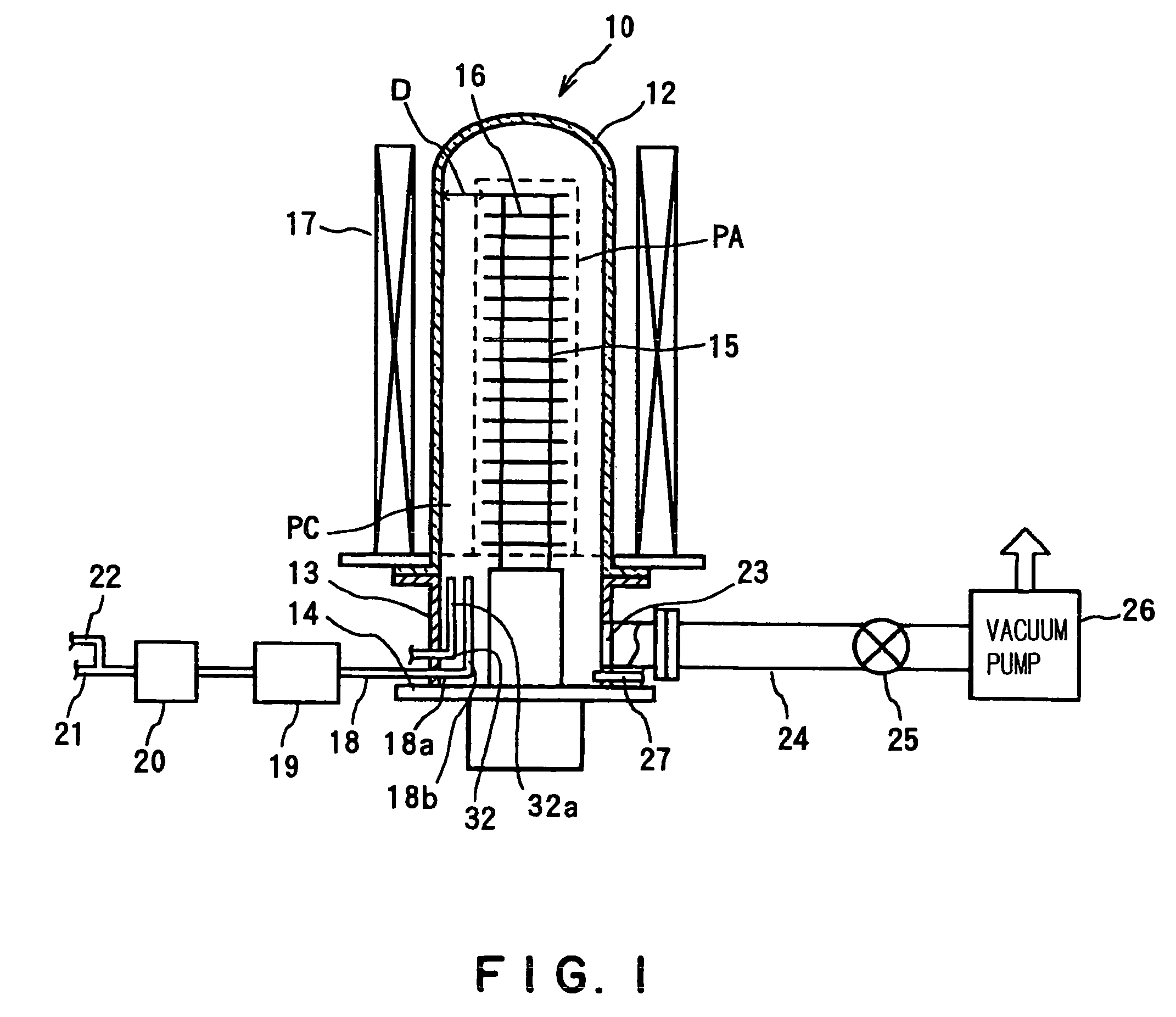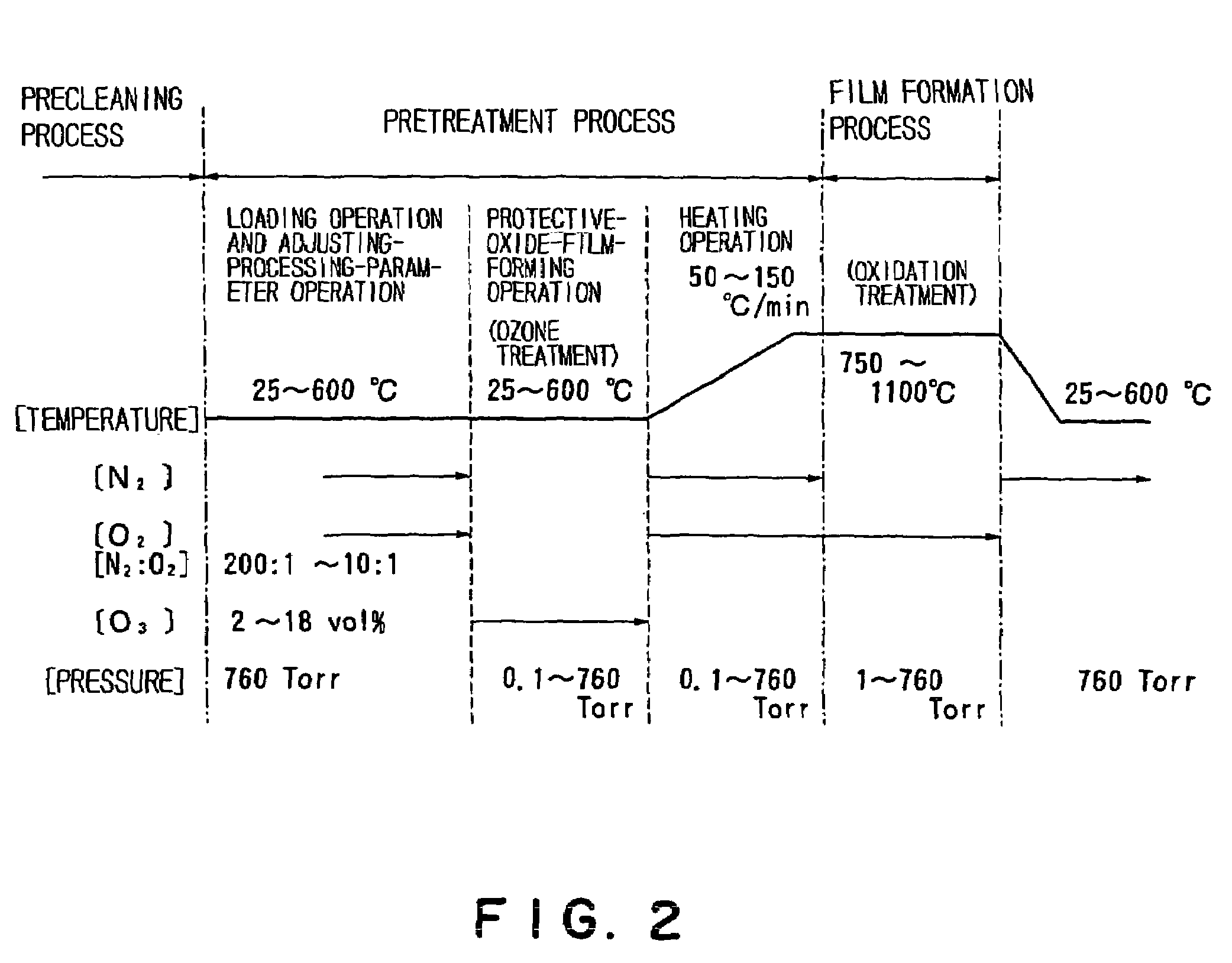Oxide film forming method
a technology of oxide film and forming method, which is applied in the direction of basic electric elements, electrical apparatus, semiconductor devices, etc., can solve the problems of difficult to form high-quality oxide films, poor film quality, and low reliability of oxide films obtained in the oxide film formation process, and achieves the effect of favorable characteristics and long li
- Summary
- Abstract
- Description
- Claims
- Application Information
AI Technical Summary
Benefits of technology
Problems solved by technology
Method used
Image
Examples
embodiment
[0118]The embodiment of the present invention will be described below although the present invention is not limited thereto.
[0119]Each of the following process was performed basically with the oxidation treatment apparatus with the structure shown in FIG. 1 and according to the sequence shown in FIG. 3.
[Precleaning Process]
[0120]The precleaning process was performed in a hydrofluoric acid solution of 1 vol % concentration at a temperature of 23° C. by over-etching by 30% of the sacrificial oxide film of a silicon wafer with diameter of 8 inches.
[Pretreatment Process]
(1) Loading operation
[0121]The 100 pieces of wafers obtained by the precleaning process were held on the wafer boat 15 made of silicon dioxide which was then mounted on the cover member 14, and while the temperature was controlled at 300° C. and the pressure at 101080 Pa (760 Torr) inside the reaction process chamber PC with a nitrogen gas at a flow rate of 19.8 slm and an oxygen gas at a rate of 0.2 slm being supplied t...
PUM
 Login to View More
Login to View More Abstract
Description
Claims
Application Information
 Login to View More
Login to View More - R&D
- Intellectual Property
- Life Sciences
- Materials
- Tech Scout
- Unparalleled Data Quality
- Higher Quality Content
- 60% Fewer Hallucinations
Browse by: Latest US Patents, China's latest patents, Technical Efficacy Thesaurus, Application Domain, Technology Topic, Popular Technical Reports.
© 2025 PatSnap. All rights reserved.Legal|Privacy policy|Modern Slavery Act Transparency Statement|Sitemap|About US| Contact US: help@patsnap.com



